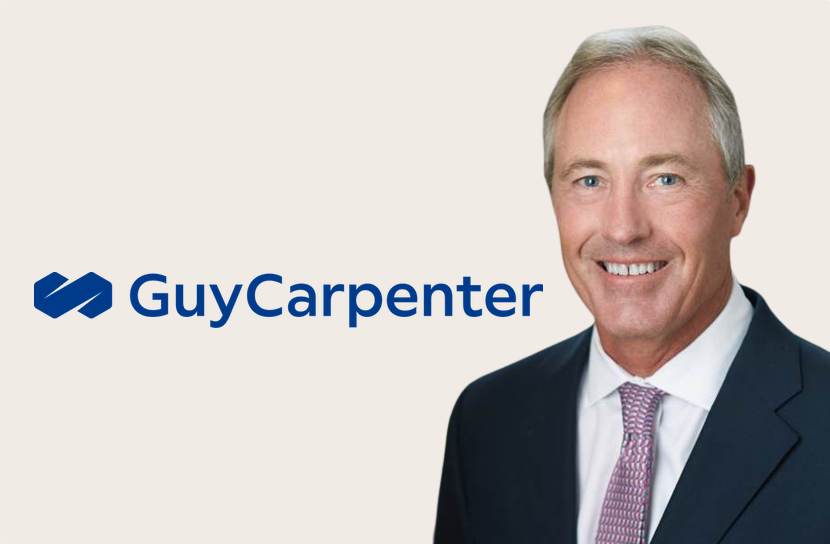Growth of 144a catastrophe bond market to accelerate: David Priebe, Guy Carpenter

The growth of the 144a catastrophe bond market is expected to accelerate, as greater acceptance of the product filters through the primary insurer base and the cat bond has demonstrated its usefulness as a complement to reinsurance, David Priebe of Guy Carpenter explained today.
Speaking during a pre-Monte Carlo Rendez-vous briefing held this afternoon, David Priebe, Chairman of Guy Carpenter, explained that the cat bond market will keep growing.
“What we’ve seen clearly is, more and more of the primary insurance companies are starting to utilise the 144 cat bond solution in their overall capital management, risk management solution,” Priebe explained.
Going on to say that, “We’ve already had seven new sponsors this year and quite frankly this area of the business has performed well.
“There’s disciplined pricing, there’s great transparency, there’s very good disclosure, investors are comfortable, primary insurers have seen that the product responds and works.
“So we think that the growth of the 144a market will continue to accelerate, as a complement to the traditional reinsurance market. So that the two together provide greater balance and stability for our primary insurance clients.”
Lara Mowery, Global Head of Distribution at Guy Carpenter, explained that investor appetite is also helping to drive this cat bond market expansion.
Earlier in the briefing she had said, of cat bonds, “We expect this positive momentum to remain as three insurers continue to manage volatility and investors increased activity in this alternative asset class.”
Later she went into more detail to explain, “Investor appetite is strong, we’re on pace for a record year and one of the things that we see with catastrophe bonds is, it’s a product that has significant appeal for investors in the fact that it’s very well structured in terms of understanding what it’s covering and how it’s covering those things.”
Mowery further explained that the features of cat bonds make them appealing to investors, highlighting, “More defined perils a defined time-frame and those kinds of certainty features do tend to appeal to the investors when they’re looking at products.”
She went on to say that, “When we think about demand for catastrophe reinsurance through 2023, one of the things that we did see is relatively flat demand from a traditional treaty capacity standpoint, as buyers evaluated the trade off’s between the price and the coverage that they were able to achieve. But then, alternatively, we saw growth in the cat bond space.
“So for some buyers, when they were looking at that very dramatically shifting environment in traditional property catastrophe buying, they did pivot to filling in some of those gaps with cat bonds and the investors in that space are responding in kind. There’s a very, very healthy deal flow happening in that space.”
David Priebe then added that the public sector space is one area for potential further catastrophe bond market growth as well.
Saying, “I think solving some of our broader public private issues. I think you’ll see the cat bond solution continue to be even more relevant.”
Mowery then noted on cat bonds, “It’s not a product that fits every situation for a catastrophe buyer, it can’t necessarily solve all problems.
“But where it does fit and where there’s a sweet spot for it as a solution, we’re definitely seeing interests align, both by buyers and sellers.”
Mowery also added, “There is growing conversation on the cat bond ILS investor side, around whether or not there’s a role for that type of solution in the cyber space, to expand available capacity. That’s certainly been a hot hot topic recently.”
Finally, asked about whether climate change is seen as a major issue by catastrophe bond investors, Guy Carpenter’s Josh Darr commented, “I would say the investors in the cat bond and ILS space are very sophisticated in the spectrum of where they’re deploying capital. “So they are more concerned about today’s view of risk and if there are any climate elements playing a role in either how frequent or how severe, they’re going to demand and want sensitivity analyses around that.
“But they’re more probably concerned about what’s already happening in climate, for today, or for the term of a one to three year bond, versus a 2040 – 2050 climate. It’s much more focused on the here and now, making sure you’re not taking out of box solutions, but adapting them to what may already be involved in our changing climate.”
To which Mowery followed-up, “I think that’s really well said. We’ve talked about the very short-term impact of climate is limited. There are other factors that are driving the increased loss activity we’ve seen, such as where people are choosing to live and the valuation adjustments on those properties. And so it does have a limited impact on this shorter term, you know, two or three year view of risk.”






